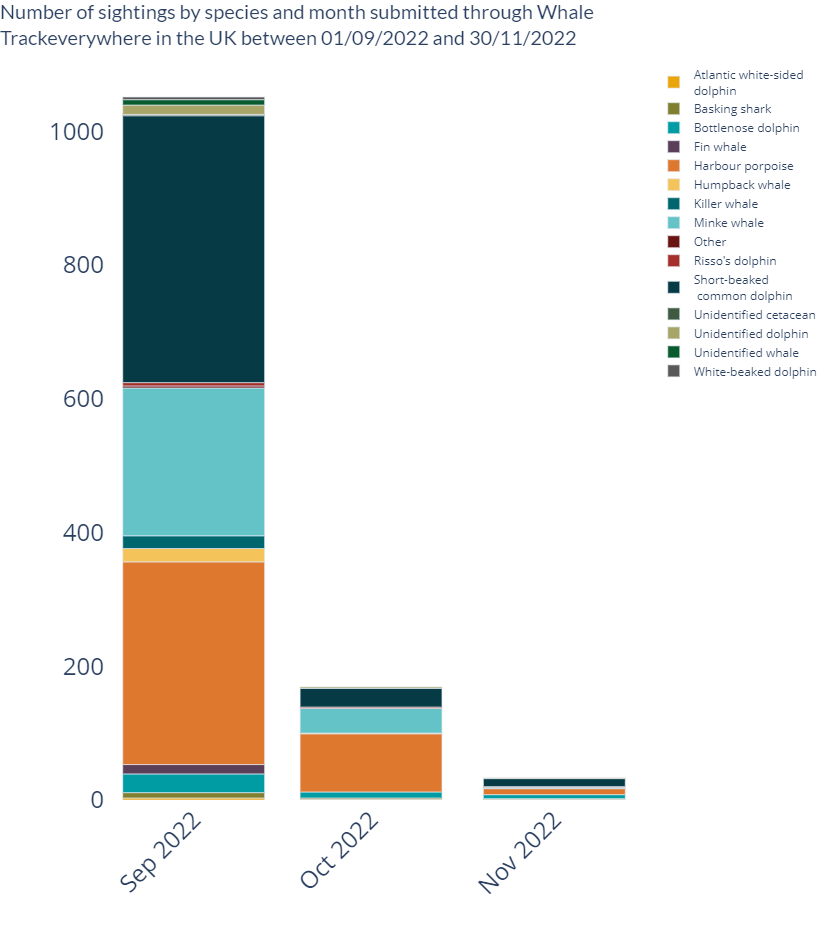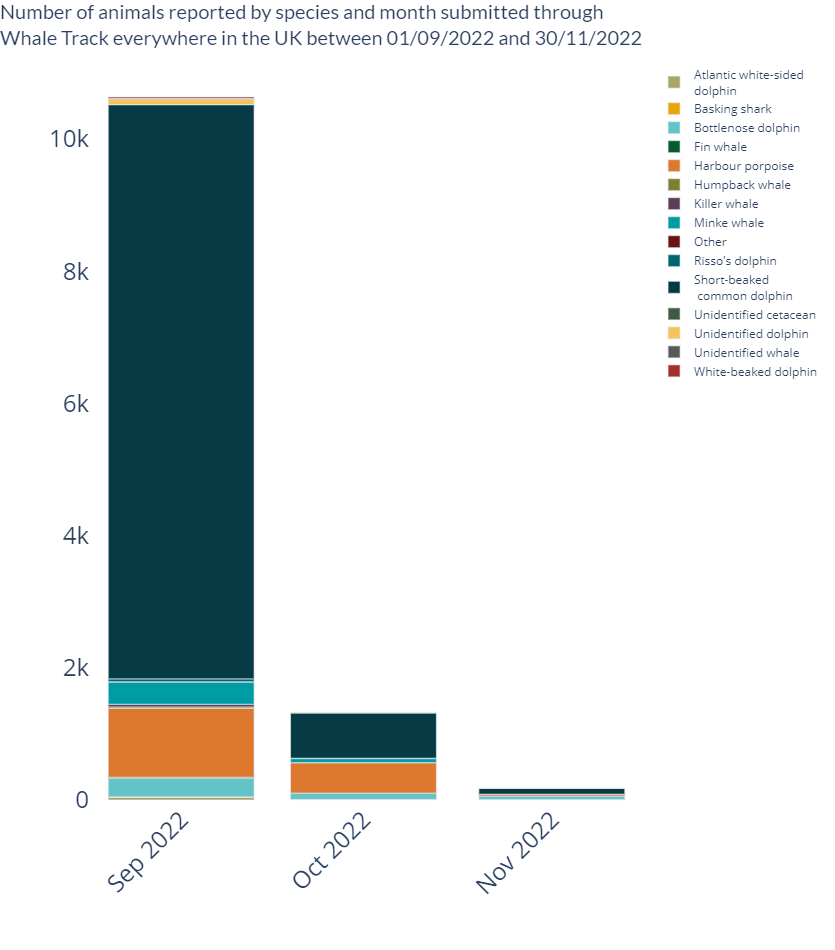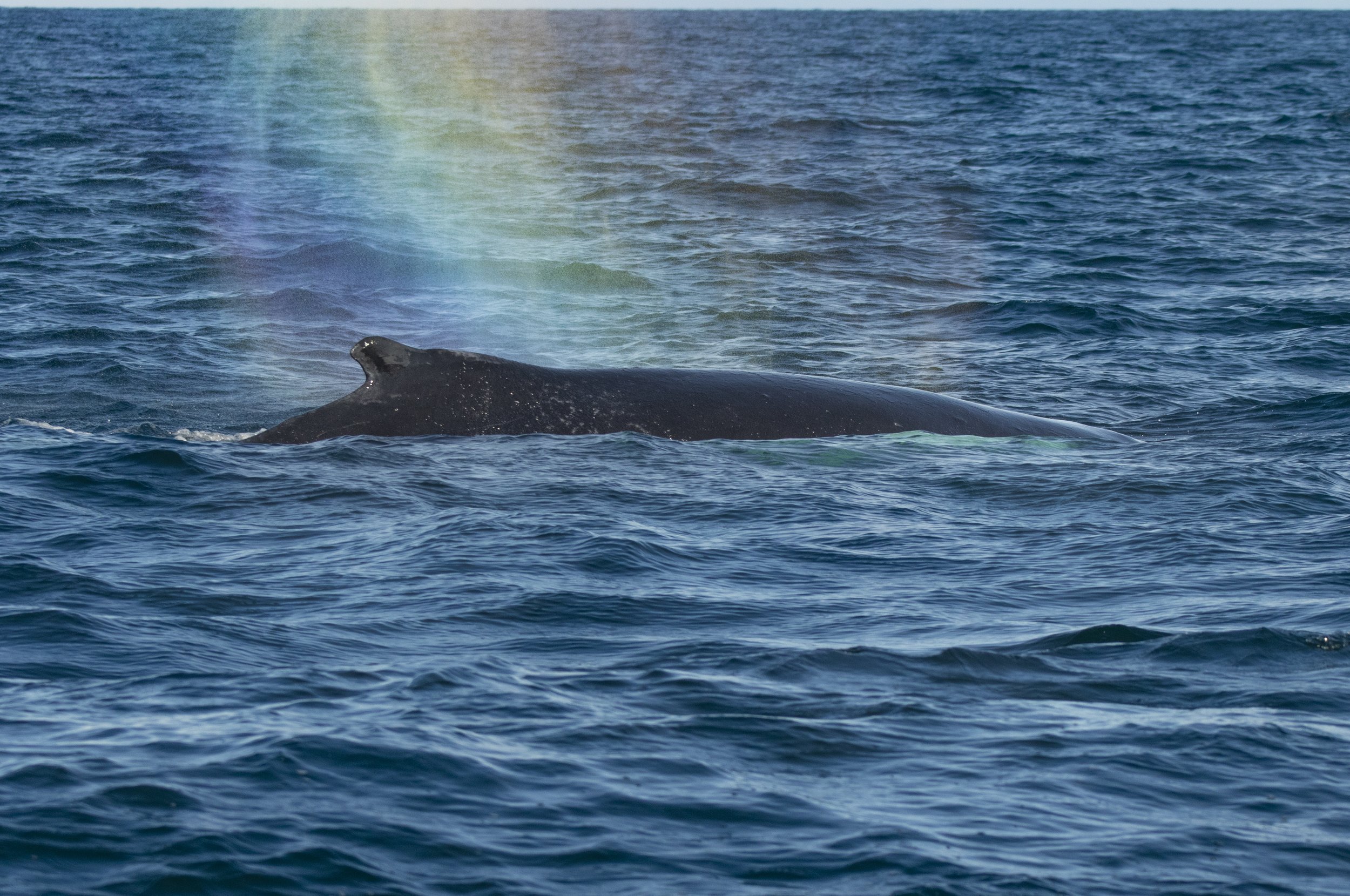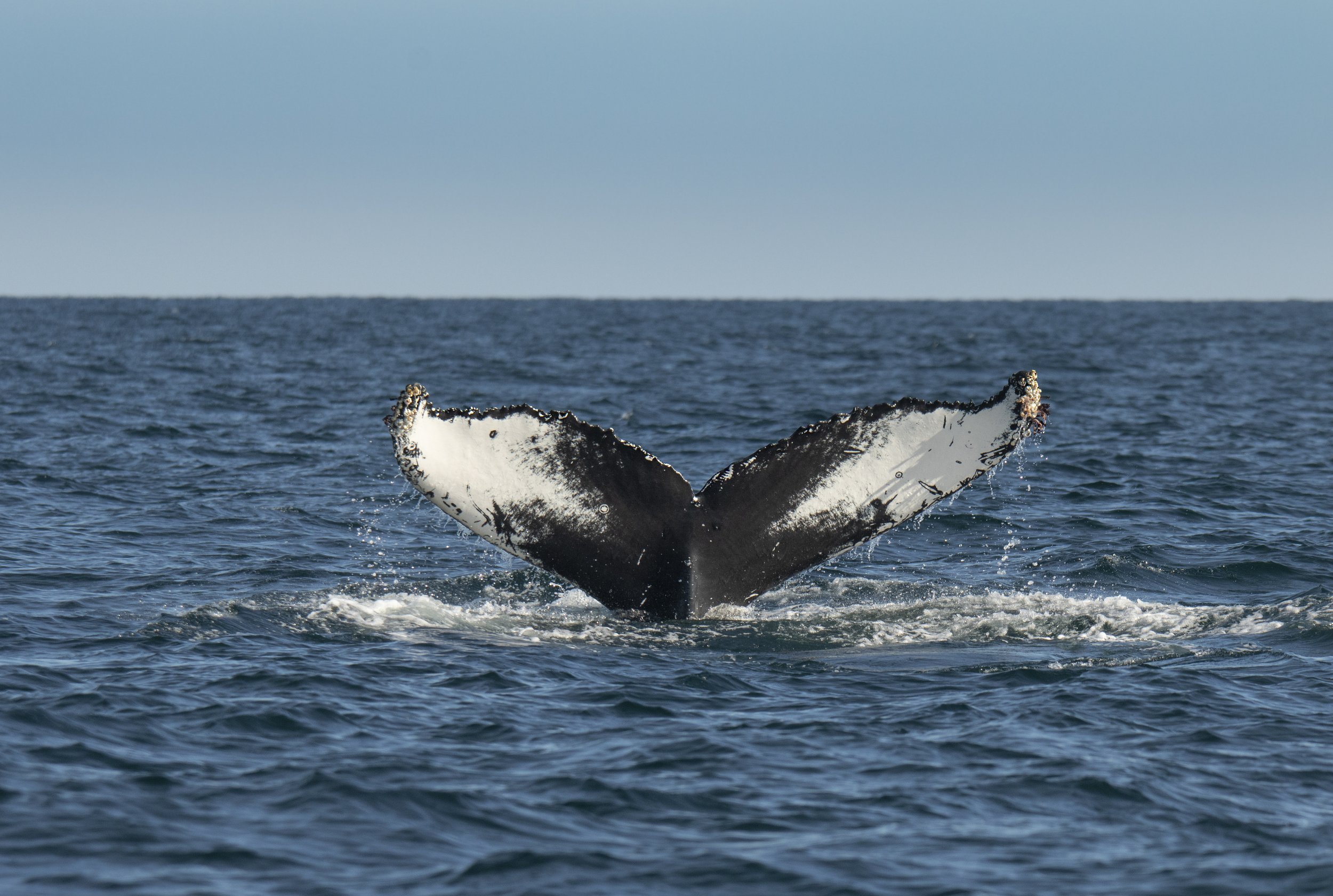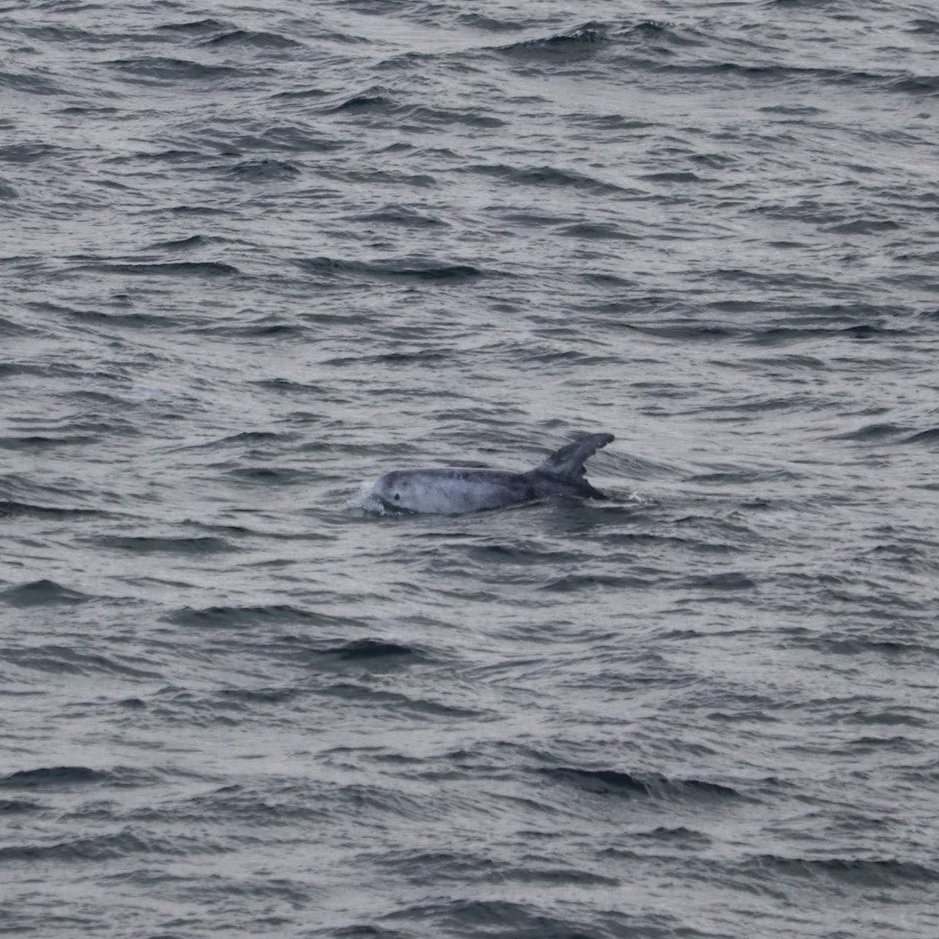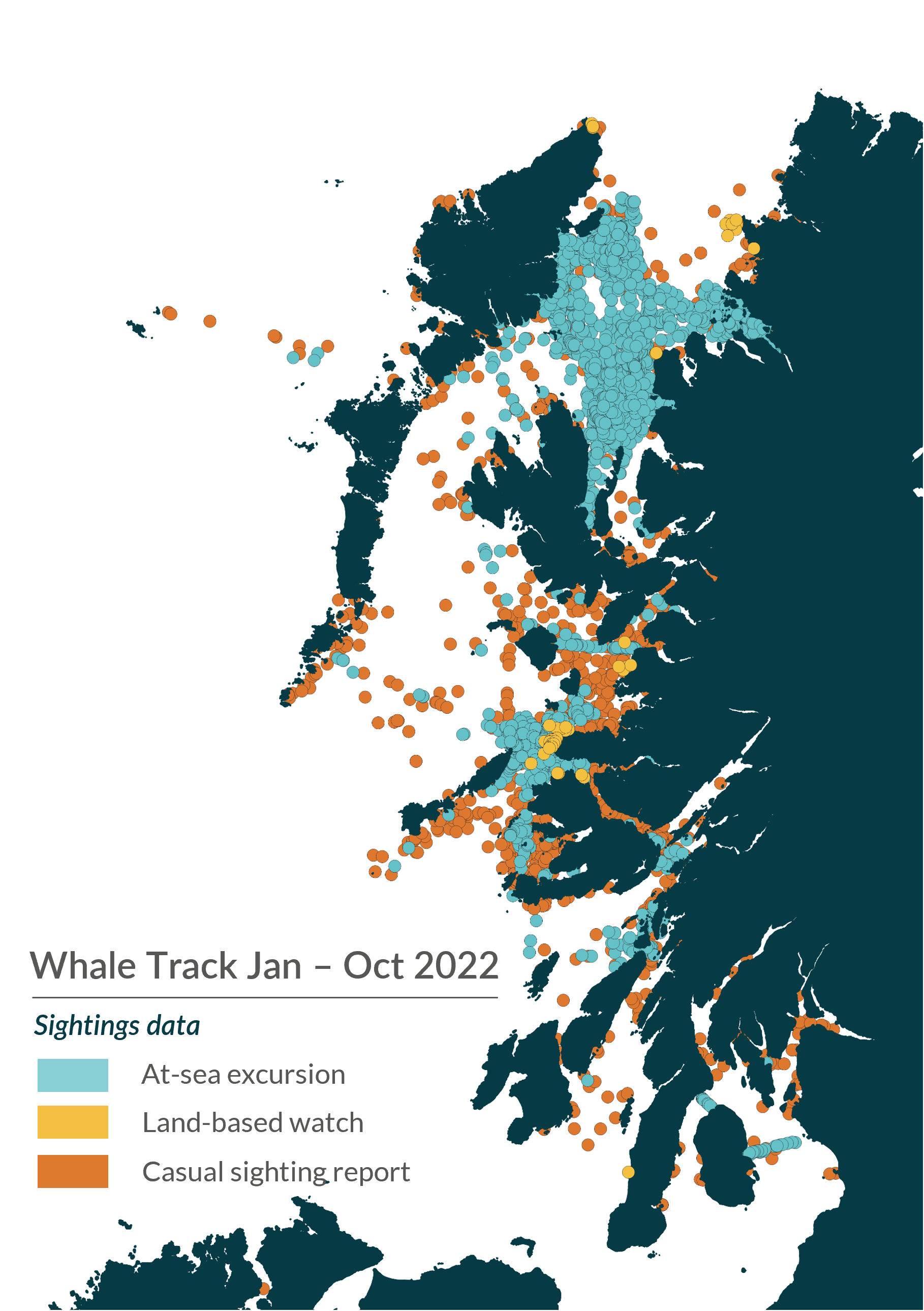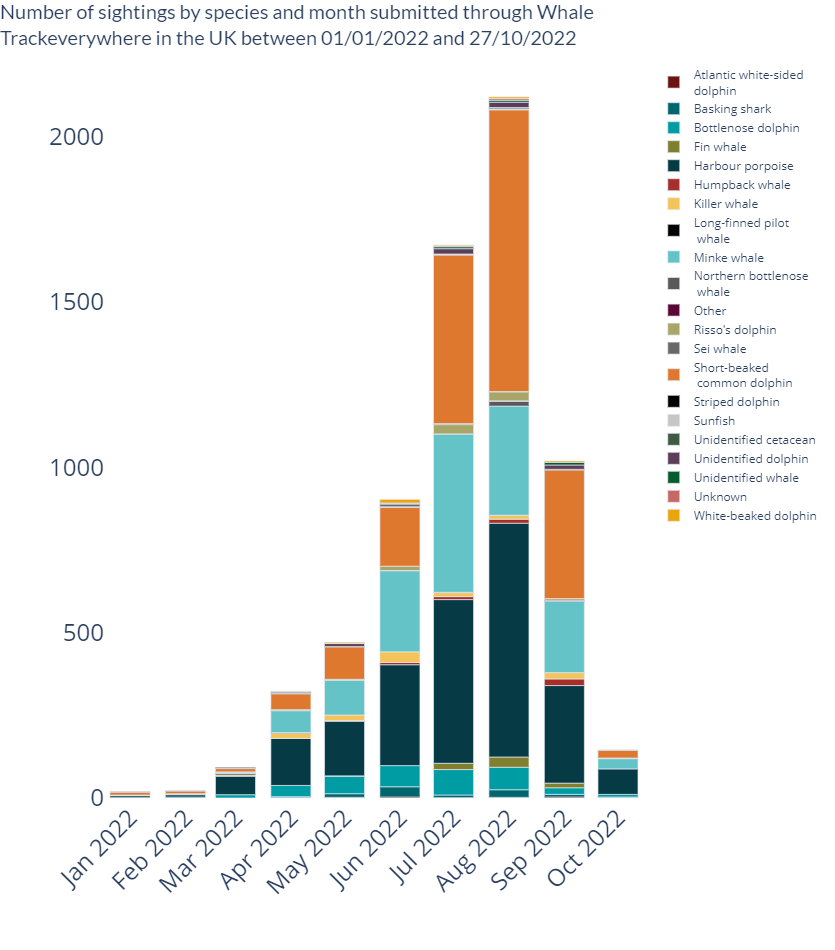Autumn antics from some of our favourite species
Thanks to everyone still watching for whales and dolphins and reporting what they’ve spotted Over autumn - it’s fantastic to see the awesome encounters coming through Whale Track. From our favourite killer whale celebrities, John Coe and Aquarius, to the 100th humpback whale being added to the Scottish Humpback Whale ID Catalogue, it’s been an exciting couple of months for marine life in scottish seas.
Between the start of September and end of November this year, 173 Whale Track users sent in a total of 1,253 sighting reports of 12,135* animals, from 11 species across Scotland. The usual suspects: common dolphin (439 sightings of 9,455 animals), harbour porpoise (399 sightings of 1,529 animals) and minke whale (260 sightings of 397 animals) once again make it to the podium as the top three most frequently sighted species.
*This data has not been analysed or corrected for effort.
HUMPBACK WHALES
A total of 21 reports of humpback whale have been reported across Scotland this Autumn.
On 10 September, Hebridean Whale Cruises sent in two reports of humpback whales seen around Tiumpan Head, Isle of Lewis. A couple weeks later on 23 September, they caught sight of another humpback whale north of Skye. Thanks to Photo ID – a non-invasive tracking technique, where markings on a fin or tail fluke can be used to identify the individual animal – the crew could tell it was the same whale they had encountered earlier in the month. After sending the images to Lyndsey from the Scottish Humpback ID catalogue she confirmed this was a new individual for the catalogue, bringing the total to 100 humpback whales seen in Scottish waters.
Humpback whale ‘Humpie B’ © Rosie Barnett
KILLER WHALES
John Coe and Aquarius are killer whale celebrities, with many people in the local marine world eager to catch a glimpse of the impressive duo. Likely the last remaining members of the West Coast Community, a sighting of these boys is one to remember.
This year has seen many people make their first sighting of the famous pair, while others were lucky enough to see them on multiple occasions. Between 01 - 08 September, they were reported over a total of 7 days, with the final two sightings around Muck in the Hebrides (06 September) and Rathlin Island, off the coast of Northern Ireland (08 September).
Caroline and Jess, two of our summer volunteers at the time, were lucky enough to spot John Coe and Aquarius during a watch event at Ardnamurchan Lighthouse.
John Coe © Andy Tait
Caroline - Summer Volunteer
Fellow summer volunteer Jess and I got the ferry over to Ardnamurchan for our weekly HWDT headland watch, but we had no idea that it was going to be an extra special watch that day. We arrived at the lighthouse and before the kind watcher could even finish saying the word ‘Coe’ we were sprinting to the foghorn!! All of a sudden, a dark fin broke the surface of the water and the biggest grin erupted across my face. We spent the next 3 hours watching them swim from left to right, together and about a mile apart…they didn’t know if they were coming or going! More watchers began to arrive with their scopes and lots of lucky visitors got to share our joy (and occasionally squeals!) in watching them. It was an honour to see the last two remaining killer whales of the West Coast Community that we know of, and I will never forget it.
We’ll be sharing a more detailed look at the 2022 sightings of the West Coast Community later in the week, so keep your eyes peeled for that!
risso’s dolphins
While not one of the more regularly reported species, Risso’s dolphins are a charismatic animal which excite many watchers. This Autumn, we’ve received eight reports of Risso’s dolphins, ranging from Thurso to Tiree, with the majority spotted in The Minch.
Growing between 2.6 and 3.8 meters in size, Risso’s dolphins are distinct from other dolphins due to their blunt and bulbous melon (forehead) which has a unique V-shaped crease running from the upper lip to the blowhole. Often described by our Education Officer, Sadie, as “a dolphin who looks like they’ve swam into a brick wall, but are smiling about it”, Risso’s dolphins are certainly a unique looking dolphin.
Another identifiable feature of the Risso’s dolphin is the markings on their bodies. As they age, the skin tone lightens to silvery-grey in some cases and the body is increasingly covered with scratches and scars inflicted by other Risso’s dolphins and prey species such as squid.
More commonly seen travelling and surfacing slowly, Risso’s can be seen breaching, tail slapping and spy hopping.
Risso’s dolphins © Harriet Lucas
sightings maps (january - October 2022)
As we near the end of the year, we wanted to give you a peak at our raw sightings data for 2022. The map below shows sightings reported into us from excursion mode, watches form land and casual reports between January and October this year. This is an incredible effort by everyone who has contributed to the data collected - thank you to every single person who has submitted a sightings report.
If you think you could help fill in any of the gaps in the map, by reporting your sightings, download Whale Track today and join a community of people deepening our understanding of the whales, dolphins and porpoises found off our coasts.
Thank you to all the hardy Whale Track observers who are still keeping watch off Scotland's west coast. As we approach the winter season, reports of whales and dolphins become less frequent, but that doesn't mean they are not out there. Casual reports can provide really useful information on different species - helping document what creatures are present through-out the year.

